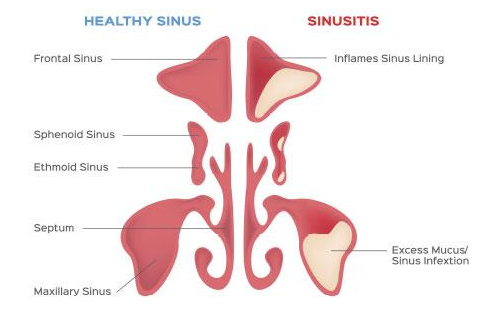What is A Deviated Septum?
The shape of your nasal cavity could be the cause of difficulty breathing through your nose or contributing to episodes of sinusitis. The nasal septum is the wall dividing the nasal cavity into halves; it is composed of a central supporting skeleton covered on each side by mucous membrane. The front portion of this natural partition is a firm, but bendable structure made mostly of cartilage and is covered by skin that has a substantial supply of blood vessels. The ideal nasal septum is exactly midline, separating the left and right sides of the nose into passageways of equal size.
Estimates are that 80% of all nasal septum’s are off-center, a condition that is generally not noticed. A “deviated septum” occurs when the septum is shifted away from the midline. The most common symptom from a deviated or crooked septum is difficulty breathing through the nose. The symptoms are usually worse on one side, and sometimes actually occur on the side opposite the bend. In some cases, the crooked septum can interfere with the drainage of the sinuses, resulting in repeated sinus infections.
Septoplasty is the preferred surgical treatment to correct a deviated septum. Septal deviations commonly occur due to nasal trauma.
A deviated septum may cause one or more of the following:
- Blockage of one or both nostrils
- Nasal congestion, sometimes one-sided
- Frequent nosebleeds
- Frequent sinus infections
- At times, facial pain, headaches, postnasal drip
- Noisy breathing during sleep




Comments
Post a Comment